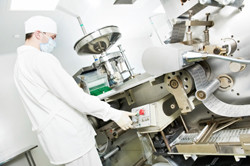Useful new chemical intermediate created
Recently, scientists have found a simple way to make cyclopropylketones using a method called radical transfer of xanthates. However, the usefulness of this method for making pharmaceuticals is limited because a secondary reaction (decarbonylation) produces a useless side-product. The EU-funded RADICALS 2009 project aimed to address this problem by creating and testing a range of precursors for the reaction. Precursor molecules using nitrogen or oxygen atoms were totally unsuccessful. The nitrogen-containing compounds could not undergo the radical transfer of xanthates reaction, and researchers were unable to create oxygen-containing compounds. Introducing another carbon ring structure yielded unpredictable results. Finally, adding carbon atoms to the cyclopropane ring yielded a simple-to-prepare compound that completely avoided the decarbonylation reaction. RADICALS 2009 has thus successfully developed an intermediate compound that can be used for the radical transfer of xanthates reaction. This will allow for a much-simplified chemical synthesis of important pharmaceutical and other useful compounds.



